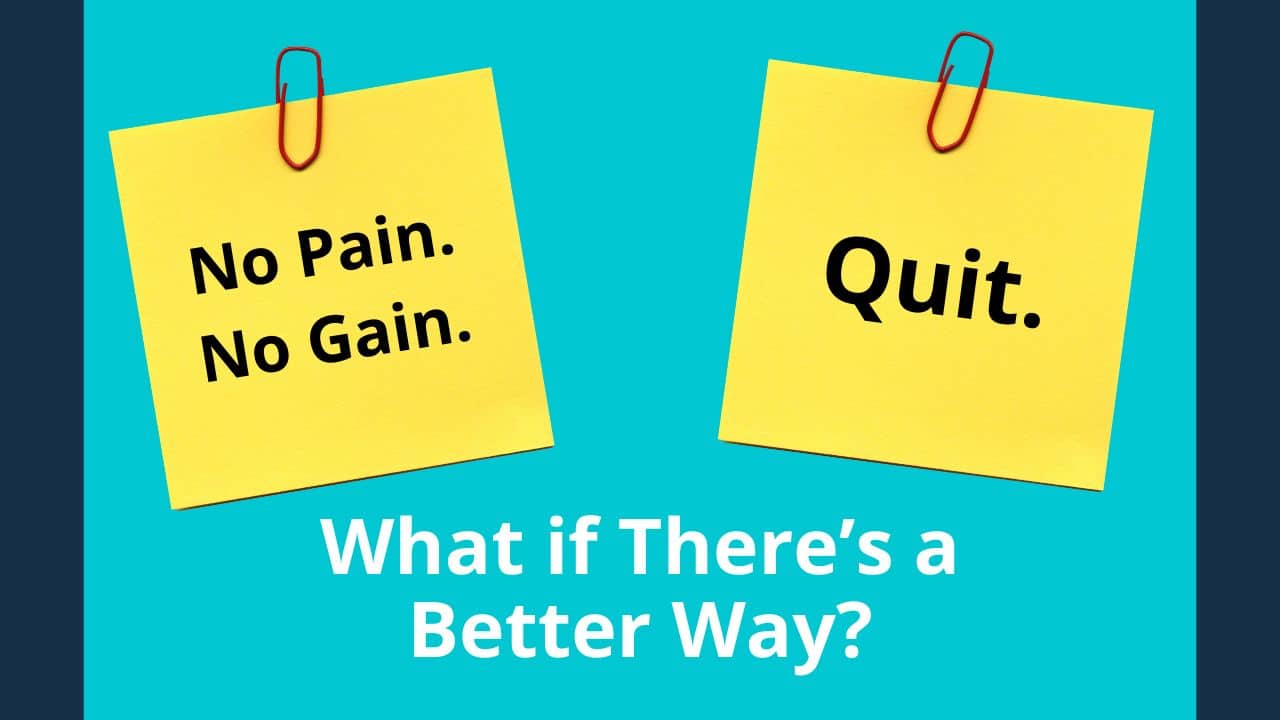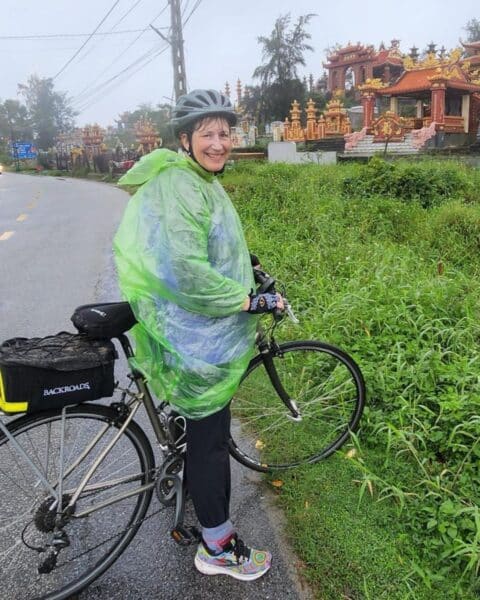No pain, no gain. Not always.

I’ll be honest here. I have a love/hate relationship with the phrase “No Pain, No Gain.”
On the one hand, as a leader, you need to do hard things. That’s not only part of your leadership remit, it’s part of being human and learning, growing, and developing. It’s not easy work but you don’t get better at it without struggling through some of the harder challenges.
On the other hand, this statement is often used in a physical setting where people literally injure themselves long-term to push through a marathon or a tough workout when the smarter course of action would be to say, “I think I’ve hit my limit and I’m out for now.” And it’s not just in the physical realm. Raise your hand if you’ve ever stayed too long at a job that was not a great fit for you, or with a boss who truly made you miserable because “you can do tough things and you should be able to tough this out too?” Ok, you can put your hand down now.
I know in Buddhist philosophy that “suffering is optional,” but everyone I know has suffered at one time or another so it might be optional but also feels part of the human experience. Which leads me to my quandary: how do you know when the pain you’re feeling is the “good” kind of growing and learning pain and not the “I’m torturing myself to prove something but I’m not sure it’s worth it.”
Recently, I was on a bike trip in Southeast Asia with my family. (Yes, it was amazing!). On day two of the biking, however, I felt this pain in my calf I’d never felt before. I started reflecting on the philosophy of “no pain, no gain.” Here I was, halfway around the world, biking in the countryside and backroads of Vietnam – wasn’t it worth some pain to continue on my bike? (As an aside, I might also mention it was pouring rain, not just a quaint drizzle.) I was convinced that yes, it was worth some pain, and a lot of wetness to continue. However, as the morning and miles dragged on, my pain continued to get worse. After each rest stop it hurt more to get back to pedaling. Finally, right before lunch, I realized that I would be more unhappy if I pushed through day 2 and couldn’t ride at all on day 3, the longest ride of the trip.

So I quit. And I really felt that I was a bit of a quitter who couldn’t hack it. Yet with some massaging and a lot of tiger balm and an ace bandage, I was able to fully bike almost every other day (fine, I did skip out on the 6-mile mountain climb but I was still recovering. . . )
So now I’m bringing it back to you. It’s the end of January. You’ve potentially made some personal resolutions. You and your team have some key goals. This is right about the time when it’s common to either let things fall to the wayside or grit your teeth and power through. I want to offer another way.
The Third Path…
When the going gets tough, we often feel like we only have an either/or option. In my opinion, there’s a third path that is highly underrated.
The third path is one of both/and. One of moderation. One of testing and experimentation, not all-or-nothing force.
My client, Sarah, brought to her session that she was really unhappy at work and wanted to leave. She didn’t believe that the CEO was taking her org in the right direction and she didn’t have enough faith in her manager to back and support her through the upcoming transitions. And yet, Sarah wasn’t sure she had enough energy right now to just quit either. Sarah was living into the societally approved notion that we should make a decision and then make it happen! However for Sarah, it felt like choosing between two lose/lose scenarios.
Together we could imagine that if STAY was 0 degrees and GO was 180 degrees, there were a lot of options between 1 and 179 degrees that might be worth exploring and testing out.
Halfway between go and stay, what options might be possible? There is the quiet quitting that we hear so much about these days. We discussed what experiments Sarah could make to stay at her job doing work she loved, without sacrificing her well-being or being overly attached to the organization.
We also debated doing a slow and steady job search versus a full-out effort. In the past, Sarah had only made full-out efforts. We even toyed with the idea of asking to be laid off in the hopes of getting some severance and a clearer runway to look for a new job.
The first experiment Sarah undertook was not quiet quitting in the true sense, but instead turning off her computer at the end of the workday. No longer working at night. No longer fretting about work issues, turning them over and over in her mind. This solution has lessened her current level of pain at work so that’s a success. It’s also giving Sarah a bit more time to strategize about what next roles and opportunities she’s most interested in and start developing a plan to focus on those targets.
Your either/or scenarios might look very different from Sarah’s but I would hazard that for almost anything, there are many third paths you haven’t even considered. Third paths can often help us honor multiple values and needs without choosing one and ignoring the others.
How the third path looks for you:
Instead of focusing on grit and pushing through the pain, what are other options that might honor what you think is important yet be a different way you haven’t thought of?
Dan Heath, in his new book “Reset,” suggests that once you have a goal, you think of what the purpose of the goal is, and then brainstorm 10 other ways you could reach that purpose. For Sarah, her GOAL was to find a new job. Her PURPOSE was to be more present to her family and less unhappy at work. Setting better boundaries is one way to achieve that purpose for now, without yet having a new job.
How the third path looks for your team:
You might have a team KPI you’re striving for. It’s worth sitting down with your team and considering what’s the greater purpose behind that KPI. And brainstorming, to achieve that purpose, what are 10 other ways you could do it? Perhaps you still want to focus on that KPI, but you’ve likely also helped your team creatively generate other great ways to reach a larger company goal that might give you more options in the future if you hit any barriers in your current plan.
Too much pain is generally a signal that something is no longer aligned. Just as I got off the bike early one day to reach my goal the second, reassessing what’s possible earlier in your life or learning cycle allows you to generate many more options before dealing with a lot more pain. And that I believe, is a gain for us all!